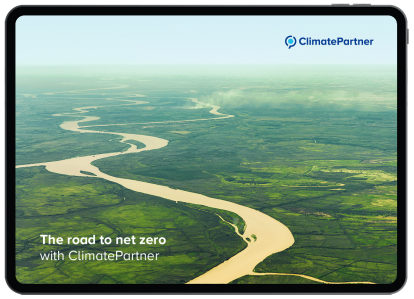The road to net zero
We hear “net zero” in the news all the time. Countries and companies around the world are pledging to join the “race to zero”. But what does that really mean?

What does net zero mean?
We hear “net zero” in the news all the time. Countries and companies around the world are pledging to join the “race to zero”. But what does that really mean?
The way carbon moves around Earth is known as the carbon cycle. Carbon occurs in various chemical compounds, such as carbon dioxide (CO2). The carbon cycle involves carbon sources and carbon sinks, meaning anything that absorbs more carbon than it releases (e.g. plants, the ocean, and soil).
This system was always able to stay in balance – until it was disturbed by humans. Our activity has created an imbalance between the amount of greenhouse gases (GHGs) released into the atmosphere and the amount of carbon that can be absorbed by our planet‘s natural sinks. As a result, more and more greenhouse gases are accumulating in the atmosphere, warming our planet and driving climate change.
To limit global warming, we need to reach a balance between anthropogenic emission sources and removals. This is the state known as net zero.
Why we need to reach net zero – and quickly

We are at a critical juncture in needing to restore equilibrium to Earth’s delicately balanced carbon cycle.
This needs to happen in time to limit global warming to 1.5 °C, as the frequency and scale of climate-related disasters are already increasing and permanent changes to our environment are already on the horizon.
Then we have “tipping points” – critical thresholds that, when exceeded, lead to large and often irreversible changes in the state of the system. One example is the permanent melting of the Greenland ice sheet, which will cause sea levels to rise as it continues to melt.
Feedback loops and tipping points are accelerating climate change, so we are running out of time in the race to zero.
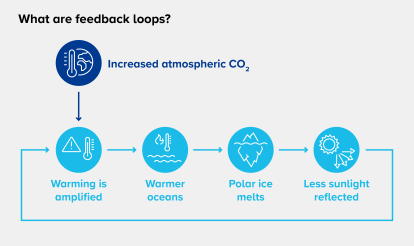
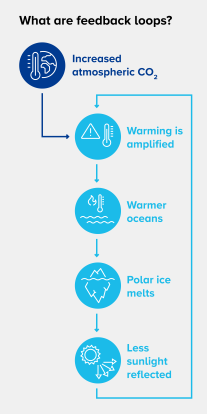
The climate crisis is also a humanitarian one. Often, the countries that contribute the least to global warming are those that are hit the hardest by the climate-related consequences. Deadly heatwaves, droughts, storms, and floods are particularly affecting areas of the Global South, forcing people to flee their homes.

To avert the worst effects of climate change, we must limit the global temperature increase to 1.5°C. As the latest report from the Intergovernmental Panel on Climate Change (IPCC) warns: without significant and immediate emissions reduction, this target will be exceeded by the early 2030s.
Reducing emissions
There is no other way: we must reduce global GHG emissions to net zero by 2050 in order to avoid the planet warming even further. Reducing emissions is therefore the highest priority in climate action.
Energy generation, agriculture, industry, transport, and construction are all major sources of emissions. Each of these needs to be transformed: for example, through energy-efficient construction, more sustainable agriculture, investment in renewable energy, and a transition to other modes of transport.
For the necessary system change, governments must develop new strategies and consistently implement the environmental policies already in place. In addition, it is necessary to examine what areas are being subsidised and taxed.
The world must halve GHG emissions in the coming years in order to reach the net zero target by 2050.
Neutralising unabated emissions
Even if we can manage to significantly reduce emissions, we can’t stop there: an emission-free economy is not possible. To bring the carbon cycle back into balance, we also need to remove GHGs from the atmosphere.
It is estimated that our oceans absorb 30% of emissions from human activity – so nature is already doing much of the heavy lifting. But as temperatures change and the oceans become warmer, the planet‘s carbon sinks will be able to absorb and store less and less carbon.
To bring carbon levels down, we need to protect our natural sinks and create new ones. This may involve preventing coastal ecosystems such as wetlands and marshes from being destroyed and forests from being cleared. In addition to establishing protections, we must add to our carbon sinks by restoring forested areas, improving carbon storage in the soil through more sustainable farming practices, and creating coral reefs.
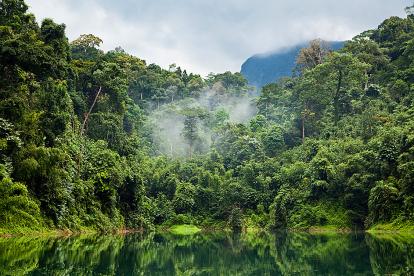
As well as natural solutions, we will also need to rely on technology to neutralise emissions. Many companies are working to engineer ways of filtering carbon from the air and storing it permanently underground. However, solutions like this are expensive, limited in capacity, and not effective for other GHGs.
How can companies achieve the net zero goal?
In the fight against climate change, reducing emissions is a priority.
Companies can also work towards their own net zero goal, by reducing all possible emissions and neutralising any unabated emissions through carbon removals. But who determines what amount of emissions must be eliminated and what level of unabated emissions is acceptable? In order to assess whether companies‘ net zero strategies have a basis in the latest available science, the Science Based Targets initiave (SBTi) introduced the Corporate Net-Zero Standard.
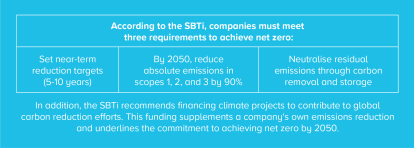
Based on the recommendations of the Intergovernmental Panel on Climate Change (IPCC), the SBTi developed methods and criteria for companies to set scientifically sound net zero targets that are consistent with limiting the global temperature increase to 1.5 °C. The Corporate Net-Zero Standard covers the entire value chain of a company, meaning scope 1, scope 2, and scope 3 emissions.
Companies are made accountable by publicly committing to a net zero pledge. After the targets are validated by the SBTi, the company‘s progress is published and trackable via the SBTi website.
The first step on the road to net zero
Developing a net zero strategy for your company is a long-term process.
The first step is to assess your starting situation, which means calculating your carbon footprint and identifying emission hotspots. In addition to the standard net zero requirements, you should assess the opportunities and risks relevant to your company. What factors affect whether you can achieve the targets? Is the commitment to net zero currently feasible? Only then can you set concrete goals.
ClimatePartner supports companies with various solutions for the journey to net zero. Our experts will work with you to develop a climate action strategy with ambitious reduction targets and to identify suitable reduction measures across all three scopes. We also offer a broad portfolio of climate projects for you to support.
ClimatePartner certification will help your company to take the necessary steps in climate action, to continually meet your targets, and to transparently communicate what you have already achieved. Find out more.
Video: What is net zero?
Emilien Hoet, Head of ClimatePartner UK, describes how your company can take its first steps towards sustainability.
Further Information
Five key steps for your company's net zero journey
Businesses from all industries and of all sizes have a crucial role to play in mitigating climate change and making the transition to a net zero emission economy. Five crucial steps towards net zero.

Emissions data for a sustainable supply chain
For many companies, the goal is to reduce emissions and offset unabated emissions across all stages of production to achieve net zero. What requirements do companies have to prepare for?
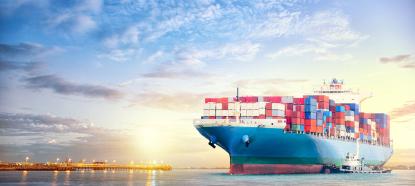
Download our e-book
